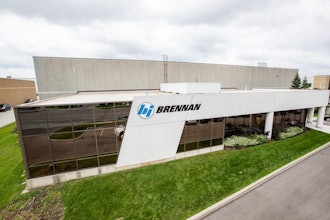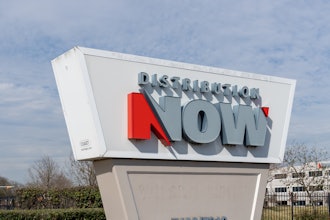
The industrial distribution sector demonstrated strong resilience in 2023, creating consistent M&A opportunities that are expected to continue in 2024. The broader M&A market slowed in 2023 from a very active 2022, with value-added distribution representing a greater proportion of transactions, driven by the asset-light nature of businesses in the sector, efficient working capital, and market fragmentation with robust add-on opportunities. All of these factors are viewed favorably by corporate buyers, private equity investors and lenders, particularly during times of greater uncertainty.
Industrial distribution transaction activity in 2023 was highest across flow control, fluid power and motion control, electrical products, tools and equipment, packaging and supplies, and MRO products and supplies.
Companies exhibiting strong financial metrics and growth continue to see attractive transaction outcomes and valuations, which we expect to continue in 2024. Much of the “noise” in company financial statements from supply chain imbalances, price increases and margin surges dissipated throughout 2023, and more normalized financial performance should generate even more conviction among buyers in 2024. As volume growth has slowed for some distributors and original equipment manufacturers (OEMs) and supply chains have stabilized, competitive price pressures are likely to emerge.
Trends Driving Demand and M&A in Industrial Distribution
Favorable demand is expected to continue for industrial distributors, driving sector growth and M&A opportunities for both buyers and sellers. Key trends positively impacting the sector include:
1. Infrastructure investments to replace, upgrade, modernize and optimize aging systems are driving strong demand and M&A activity in water and waste management, power and power distribution, civil construction, and electrification, among others. Increasing focus on remote monitoring, smart management, waste mitigation, safety, sustainability and other advancements is driving the growth of new value-added products designed to reduce waste, reduce emissions and optimize resources.
The global geopolitical situation is driving high demand for defense-related inputs and products as defense manufacturers seek to keep up with demand from the U.S. and its allies for goods utilized in global conflicts and as the U.S. expands its military infrastructure to be able to handle three fronts simultaneously. It is also driving a wave of domestic reshoring activity, including an increased number of new plant construction projects, plant expansion projects, commercial warehouses and related infrastructure.
Managing geopolitical risk in supply chains is becoming more critical, with many companies seeking alternative vendors outside of China and many OEMs moving manufacturing to Mexico, Vietnam and the U.S. From a capital markets standpoint, buyers, investors and lenders have become increasingly concerned with companies that are reliant on inputs and manufacturing in China, parts of Eastern Europe and parts of the Middle East.
2. The continued transition toward sustainability-focused products and solutions, including regulatory/legislative requirements, will contribute to growth in key segments. Demand is increasing for wind, solar and other green energies, more energy efficient heating and cooling technologies, and electric vehicle charging infrastructure to support a growing shift in the mobility industry. These dynamics will create increased demand for a variety of key components, and companies along the value chain can benefit.
3. Technology is poised to continue to play a significant role in supporting distributors and customers. By enhancing e-commerce capabilities and automating processes for order management, order-to-cash and accounts receivable, distributors can improve order-fill rates, reduce personnel costs and improve customer service and employee satisfaction. Nearly all industries stand to gain from artificial intelligence (AI), and industrial distribution is no exception. AI has the potential to automate back-office functions and improve supply chains.
Industrial automation is a segment within the broader industrial distribution landscape that will likely help companies navigate talent shortages, increase warehouse efficiency and mitigate supply chain challenges.
4. Repair-and-replacement-focused businesses continue to garner strong interest from buyers and lenders due to their predictability and resiliency driven by high proportions of non-discretionary replacement demand. That being said, an improved economic sentiment and greater visibility are likely to lead more buyers and investors to embrace businesses with a higher proportion of new project business than in 2023.
5. Businesses with exposure to sectors that were out of favor in 2022 and 2023, such as oil and gas and new residential construction, may see more investment and capital markets activity as those markets continue to normalize and long-term trends remain positive.
2024 M&A Outlook
2024 should prove to be another active year for M&A in industrial distribution, particularly given lowered recession fears, favorable end market demand, a high likelihood of lower interest rates, and continued demand for growth and consolidation.
The need for the deployment of significant capital by corporate buyers, private equity firms and lenders combined with compelling sector dynamics bodes well for industrial distributors seeking to take advantage of the capital markets. Corporate buyers maintain large cash balances, with the need to show growth for shareholders being an integral driver for dealmaking. Private equity has raised record amounts of capital, supporting a healthy appetite for new platforms and add-on acquisitions. According to S&P Global Market Intelligence, global private equity dry powder soared to an unprecedented $2.59 trillion as of December 2023, up nearly 8% from the previous year, as a slowdown in deal flow produced more limited opportunities for firms to deploy capital raised in previous years.
As the year progresses, the probability of lower interest rates should increase and be another positive driver of M&A and economic activity, given the lower cost of growth and acquisition financing.
The 2024 presidential election is not likely to have the same impact on M&A as it did in 2020, which carried a credible threat of higher tax rates and generated a massive surge in owners seeking to sell ahead of any potential increases. That same threat doesn’t appear to exist in the current election cycle, and a high level of tax-driven selling activity is not anticipated in 2024.
While the markets look positive for 2024, there are a few wildcards we will be tracking. Competitive price pressures could impact financial metrics relative to 2022 and 2023. Geopolitical risks will most likely persist and have the potential to increase, which may cause new supply chain disruptions and the continued need to seek alternative supply sources. Companies in the broader market that chose not to transact in 2023 due to too much “noise” in their financials and uncertainty in their end markets may choose to come to market in 2024, creating a greater supply of actionable M&A targets and more competition among sellers. Private equity firms have held a large number of companies beyond their target hold periods that will need to come to market as limited partners invested in those funds continue to seek returns of capital to satisfy new fund commitments.
Overall, given the strong demand to deploy capital and grow through M&A, we expect valuations in the industrial distribution market to hold up in 2024. Further, we expect the M&A and capital markets environments to be as active or more active as in 2023 and for buyers and lenders to underwrite the positive dynamics and trends in the sector.
Kevin Sargent is managing director of the industrial distribution investment banking team at Brown Gibbons Lang & Co.























